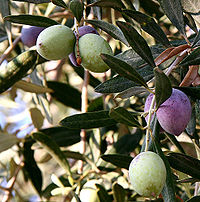
Physiological, structural and ultrastructural impacts of silver nanoparticles on the seagrass Cymodocea nodosa.
Sign Up to like & getrecommendations! Published in 2020 at "Chemosphere"
DOI: 10.1016/j.chemosphere.2020.126066
Abstract: Silver nanoparticles (AgNPs) are an emerging contaminant, currently considered to be a significant potential risk to the coastal environment. To further test potential risk, and to determine effect concentrations and sensitive response parameters, toxic effects… read more here.
Keywords: silver nanoparticles; structural ultrastructural; cymodocea nodosa; physiological structural ... See more keywords

Physiological and structural responses of hybrid firs embryogenic tissue under cadmium stress
Sign Up to like & getrecommendations! Published in 2020 at "South African Journal of Botany"
DOI: 10.1016/j.sajb.2020.02.030
Abstract: Abstract The study was focused on the investigation of cadmium (Cd) effect on the embryogenic tissue of hybrid firs growing under in vitro conditions. Two cell lines AC78 (Abies alba x A. cephalonica) and AN72… read more here.
Keywords: embryogenic tissue; structural responses; hybrid firs; tissue ... See more keywords

Physiological, Structural, and Functional Insights Into the Cryoprotection of Membranes by the Dehydrins
Sign Up to like & getrecommendations! Published in 2022 at "Frontiers in Plant Science"
DOI: 10.3389/fpls.2022.886525
Abstract: Plants can be exposed to cold temperatures and have therefore evolved several mechanisms to prevent damage caused by freezing. One of the most important targets are membranes, which are particularly susceptible to cold damage. To… read more here.
Keywords: lea proteins; insights cryoprotection; functional insights; cryoprotection ... See more keywords

Physiological and Structural Responses to Prolonged Water Deficit in Young Trees of Two Olive Cultivars
Sign Up to like & getrecommendations! Published in 2022 at "Plants"
DOI: 10.3390/plants11131695
Abstract: This study aimed to characterize the physiological and structural responses of potted one-year-old olive trees belonging to two olive cultivars—‘Nocellara del Belice’ and ‘Cerasuola’—exposed to prolonged drought under greenhouse conditions. Two irrigation treatments based on… read more here.
Keywords: water; drought; olive cultivars; physiological structural ... See more keywords

Physiological and Structural Responses of Olive Leaves Related to Tolerance/Susceptibility to Verticillium dahliae
Sign Up to like & getrecommendations! Published in 2022 at "Plants"
DOI: 10.3390/plants11172302
Abstract: Verticillium wilt of olive (VWO), caused by the soil borne fungus Verticillium dahliae, is one of the most relevant diseases affecting this crop worldwide. One of the best VWO management strategies is the use of… read more here.
Keywords: verticillium; olive leaves; verticillium dahliae; tolerance ... See more keywords